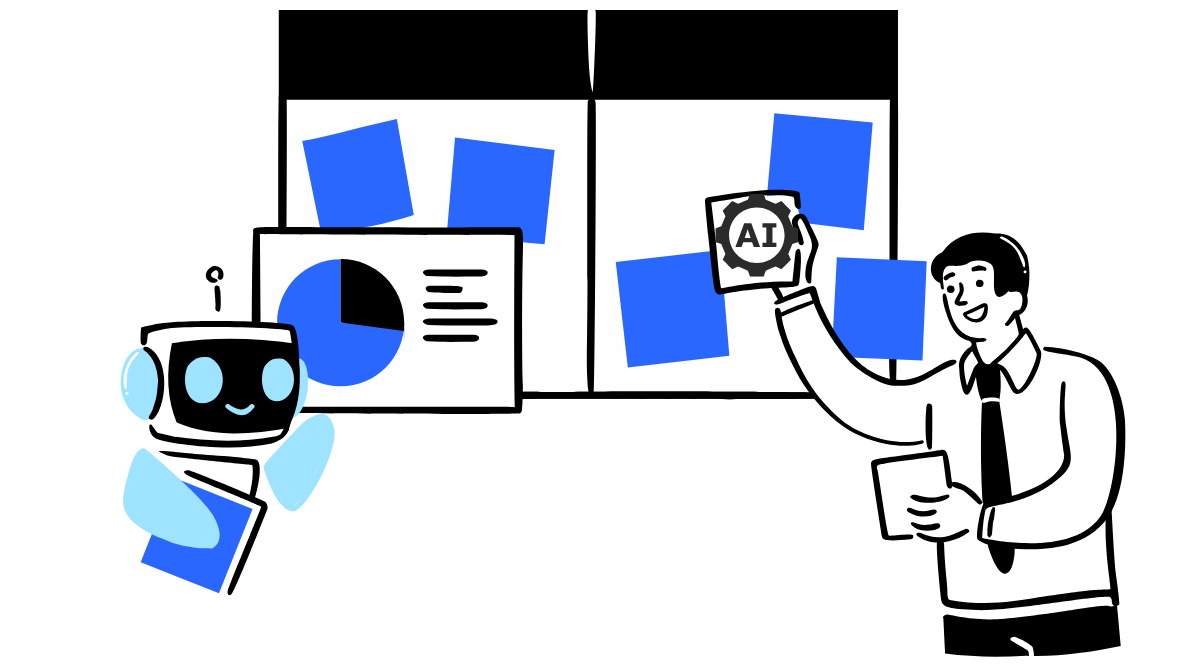Proven Cold Email Strategies That Drive Results
Discover top cold email strategies and experiments for boosting response rates and conversions.

Cold emailing remains an undefeated strategy for businesses like Floworks.ai aiming to reach out to potential clients or collaborators in an ever-expanding digital landscape. Despite the surge in various forms of digital marketing, cold emails continue to be one of the most direct ways to establish a foothold with new audiences. For those unfamiliar with Floworks.ai, it is a company renowned for its expertise in intelligent automation solutions, offering tools that enable businesses to optimize their operations with ease. Understanding and implementing proven cold email strategies can significantly impact your response rates and conversion goals, aligning perfectly with Floworks.ai's innovative approach to business communication.
Why Cold Emails Still Matter in Modern Outreach
In the dynamic world of digital communication, cold emails might seem outdated for some, but they still hold immense value. These emails offer a direct line to prospects, giving businesses the chance to present their value proposition succinctly. Cold emails can lead to fruitful opportunities such as securing partnerships, gaining feedback, or closing sales, all while personally engaging with the recipient.
For Floworks.ai, whose mission involves facilitating smart solutions for businesses, cold emails can enhance personalized outreach efforts. They allow companies to not only introduce their offerings but also establish a meaningful dialogue that could lead to successful business collaborations.
Understanding the Core Components of a Successful Cold Email
To craft a cold email that genuinely resonates with your audience, there are crucial elements to consider:
- Subject Line: This is the first thing recipients see and determines whether your email gets opened. It should be intriguing yet informative.
- Personalization: Address the recipient by name and tailor the message to their needs or interests.
- Value Proposition: Clearly articulate why the email is worth their time. What benefit do they derive?
- Call-to-Action (CTA): Encourage a simple action, be it a reply, a call, or visiting a website.
- Signature: Include professional credentials and contact information to establish credibility.
Each component must work harmoniously to engage the recipient, much like how Floworks.ai's solutions integrate to improve operational effectiveness.
Common Misconceptions About Cold Emailing
Despite its potential, cold emailing is often misunderstood, leading to inefficiencies:
- Assuming Cold Emails Are Spam: Not all cold emails are spammy. Effective emails are well researched and personalized.
- Believing One Email is Enough: Cold emailing is often a process that requires follow-ups and perseverance.
- Overloading Information: Simplicity is key. Avoid lengthy emails that stray from their core message.
Floworks.ai appreciates the importance of clarity and precision and embodies this in its communication methodologies, alleviating such misconceptions effectively.
Analyzing Successful Cold Email Experiments
Case Study: Boosting Response Rates with Personalization
One of the most compelling aspects of cold emailing is personalization. A case study revealed that personalized emails receive 29% higher open rates and 41% higher click-through rates compared to generic emails.
For instance, when a sales team integrated personalized subject lines referencing a recent accomplishment or mutual interest, engagement dramatically increased. By harnessing relevant data and insights into each prospect, Floworks.ai can tailor its automated solutions to meet specific business needs, reinforcing its client-centric ethos.
Experimenting with Subject Lines for Enhanced Open Rates
Subject lines can make or break your email outreach. Experiments show that subject lines with a question or relevant statistic pique interest.
Consider the following comparative study:
- Generic Subject Line: "See our offer"
- Personalized Subject Line: "How 30% more efficiency could transform your operations?"
The latter speaks directly to the user’s potential gain, much like how Floworks.ai's solutions appeal to specific business outcomes rather than just the features.
The Role of Timing in Cold Email Success
Timing is a crucial factor often overlooked in cold emailing strategy. A/B testing has shown that emails sent on Tuesdays have a higher chance of being opened and responded to. Additionally, emails sent during the late morning, around 10 AM, tend to perform better.
Floworks.ai can utilize this insight to schedule their outreach campaigns optimally, ensuring their intelligent solutions reach potential clients when they're most receptive.
Creating High-Converting Cold Email Templates
Template A: The Direct Approach
This template is concise and focused on the main offer:
- Subject Line: "Exclusive Opportunity to Enhance Efficiency"
- Body: Introduce your company and directly present the value. Mention a quick benefit that the recipient can understand.
Template B: The Value-Provide Interaction
This template starts with value-oriented content:
- Subject Line: "Your Guide to Improved Business Automation"
- Body: Initiate with valuable insights or data. Follow with how your solution provides this in practice.
Template C: The Casual Connect
A more relaxed, personable style:
- Subject Line: "Quick Question on Business Growth"
- Body: Engage the reader with a genuine question before transitioning to how your service aids in addressing that.
Creating these templates, akin to Floworks.ai's diverse service offerings, can help in generating higher conversion by resonating distinctly with different audience segments.
By focusing on human-centric and high-value communication, cold emails can transcend beyond mere outreach attempts, becoming instrumental in cementing successful business relationships. Floworks.ai, with its visionary approach, continues to exemplify this potential by using intelligent automation and solution-based strategies to meet and exceed market expectations.
Innovative Cold Email Techniques That Work
Using Trigger Events to Spark Engagement
Incorporating trigger events into your cold emails can significantly boost engagement rates. A trigger event refers to any occurrence that can serve as a catalyst for communication with your prospect, such as a recent promotion, an acquisition, or an expansion. By referencing these events, you can create a tailored message that feels timely and relevant to the recipient.
For example, if a company announces a merger, Floworks.ai can send a cold email highlighting how their intelligent automation solutions could simplify this integration process. This not only shows that you’re informed about their developments but also positions your offering as a direct answer to their current needs.
To apply this tactic:
- Monitor industry news and updates related to your prospects.
- Set up alerts for specific companies or industries.
- Craft your email promptly to coincide with the event for maximum impact.
Leveraging Social Proof in Your Email
Social proof is a compelling strategy often used in marketing and sales to establish credibility. By showcasing successful case studies, testimonials, or significant metrics from existing clients, you can convince prospects of your value.
Floworks.ai could highlight stories from similar businesses that have successfully optimized their operations using their solutions. For instance, including a snippet such as, “Join over 100 companies that have improved their efficiency by 20% with Floworks.ai’s tailor-made automation tools,” can enhance trust and persuade the recipient to engage further.

Building Credibility with Quick Value
Offering immediate value in your emails can capture attention and build credibility quickly. Consider sharing insights, data, or tools that the recipient would find beneficial without immediately asking for anything in return. This gesture signifies goodwill and establishes a foundation of trust.
For Floworks.ai, sending a quick tip or a whitepaper related to the recipient’s industry – such as a report on automation trends or an ebook on improving productivity – can immediately demonstrate expertise and relevance, prompting further interest in Floworks.ai’s offerings.
| Type of Quick Value | Description | Example for Floworks.ai |
|---|---|---|
| Industry Insights | Latest trends or data in the field | PDF report on automation trends for 2024 |
| Educational Content | Guides or whitepapers | Ebook on workflow automation techniques |
| Tool or Template | Free resource to simplify tasks | Excel template for process tracking |
Proven Cold Email Tips for Better Response Rates
Customizing Your Message for Each Prospect
The one-size-fits-all approach rarely generates the results desired in cold emailing. Customizing your message for each prospect is key to enhancing engagement. Personalized content demonstrates effort and respect towards the recipient, making them more likely to respond.
Tips for customization:
- Use the recipient’s name and their company’s name.
- Reference specific pain points relevant to their industry.
- Mention mutual connections or shared experiences.
For an entity like Floworks.ai, leveraging insights about a prospect’s current software tools can tailor the email narrative to depict how their solutions fit seamlessly into existing systems.
Avoiding Common Pitfalls in Cold Email Outreach
Even with the best intentions, cold emails can sometimes fall flat due to common errors. Avoiding these pitfalls can greatly improve your campaigns:
- Being Too Formal or Informal: Strike a balance; professionalism is key, but a friendly tone can be inviting.
- Overloading with Information: Get to the point quickly. Avoid long-winded introductions or excessive jargon.
- Failing to Offer a Clear CTA: Clearly state what action you’d like the recipient to take next.
Floworks.ai can optimize its cold email campaigns by maintaining a concise and clear message focus, driving towards its desired conversion pathways.
Effective Follow-up Strategies
Follow-ups are indispensable in a successful cold email strategy. A strategic follow-up can nudge prospects closer to engagement if done thoughtfully. Here is a simple plan:
- Initial Follow-Up: Sent 3-4 days after the initial email. Keep it short, reference the previous email, and kindly ask if they had a chance to consider it.
- Second Follow-Up: After another week, add a tidbit of new information, such as a relevant article or data point.
- Final Follow-Up: A week following the second, express understanding if they’re not interested, and leave the door open for future communication.
By aligning follow-up messages with prospects’ workloads and respecting their time, Floworks.ai can increase the likelihood of interaction without coming across as intrusive.
Cold Emailing Best Practices to Improve Reply Rates
Crafting Compelling Calls to Action
A call to action (CTA) is a linchpin in any marketing communication. A well-crafted CTA can transform a passive recipient into an active prospect. Effective CTAs are clear, specific, and actionable.
For Floworks.ai, a CTA could be:
- “Schedule a free demo of our automation solutions today.”
- “Reply to this email for a complimentary consultation.”

The Importance of A/B Testing in Cold Emailing
A/B testing, or split testing, allows you to experiment with different aspects of your email to find out what works best. This could involve testing variations in subject lines, sender names, or email content.
Floworks.ai can improve its cold emailing strategy by:
- Testing subject line formats for open rate variances.
- Experimenting with CTA wording for click-through rates.
- Analyzing different personalization elements.
Regularly applying A/B testing ensures that email strategies are continually refined and optimized for best results.
Ethical Considerations in Cold Emailing
Ethics are crucial when engaging in cold emailing to preserve brand reputation and comply with regulations. Key ethical practices include:
- Consent and Privacy: Always ensure that emails comply with legal regulations such as GDPR or CAN-SPAM.
- Respecting Unsubscribe Requests: Make it easy for recipients to opt-out and promptly honor these requests.
- Transparency: Clearly identify who you are, why you’re reaching out, and what the recipient can expect by engaging.
Floworks.ai can build trust with prospects by prioritizing ethical standards, reinforcing its authority and integrity in the intelligent automation landscape.
Conclusion
Incorporating effective cold email strategies into your outreach toolkit can significantly benefit your business interactions. When done correctly, cold emailing allows you to connect meaningfully with potential clients, paving the way for sustainable, successful relationships. The learnings from various experiments highlight the importance of personalization, the right timing, and engaging subject lines—elements that Floworks.ai values and implements in its interactions.
The tailor-made templates discussed here provide a foundational blueprint you can adapt to various contacts, ensuring an engaging outreach. With Floworks.ai's dedication to intelligent automation, your business communication can reach unmatched levels of precision and relevance, thus offering recipients meaningful engagement that stands out in crowded inboxes.
The world of cold emailing is ever-evolving, and staying informed about trends and best practices ensures that your strategies remain effective. Floworks.ai continues to innovate and refine its approaches, aligning perfectly with current market needs by providing solutions that facilitate smarter business operations.
For those looking to refine their cold email strategies further, seeking out additional resources and learning more about market trends will prove beneficial. Embrace these strategies as an ongoing learning experience, improving and iterating upon your approach for optimal results.
FAQ: Frequently Asked Questions on Cold Email Strategies
How Many Follow-Ups Should I Send for a Cold Email?
While there's no one-size-fits-all answer, a general guideline is to send two to three follow-up emails. Space each follow-up at least a week apart to give the recipient adequate time to respond. Ensure each follow-up email provides additional value or a different perspective, thereby enhancing the prospect's engagement without overwhelming them.
What are the Best Times to Send Cold Emails?
Research and experiments suggest that emails sent on Tuesdays or Thursdays, particularly in the late morning around 10 AM, tend to have higher open and response rates. These times leverage common work patterns where individuals are settled into their week but not overwhelmed, thus more likely to check and respond to emails.
How Can I Measure the Success of My Cold Email Campaign?
The success of a cold email campaign can be measured by several key metrics: open rates, response rates, click-through rates, and conversion rates if there is an applicable call to action. Monitoring these metrics allows you to fine-tune your subject lines, message content, and timing, aligning your strategies more closely with recipient behaviors and preferences.
Should I Personalize Every Cold Email?
Personalization is crucial to the success of cold emails. While it may not be feasible to deeply personalize every single email in large campaigns, adding simple personal elements—like name or a reference to the recipient's company or role—can significantly increase engagement. Use data you gather to segment your audience, all the while ensuring your message resonates and provides tailored relevance.
Is It Ethical to Send Cold Emails?
Yes, sending cold emails is ethical as long as you follow best practices and comply with regulations like GDPR or CAN-SPAM. Always ensure you provide an easy opt-out mechanism, respect privacy regulations, and send emails that are genuinely valuable and relevant to the recipient. Ethical practices not only build trust but also ensure better responses and long-term success.


